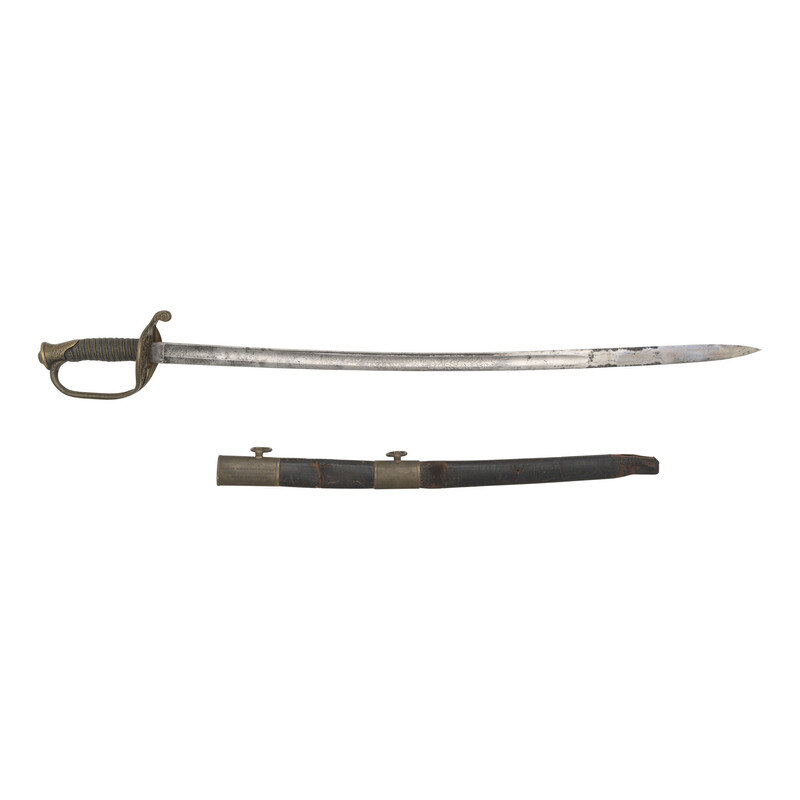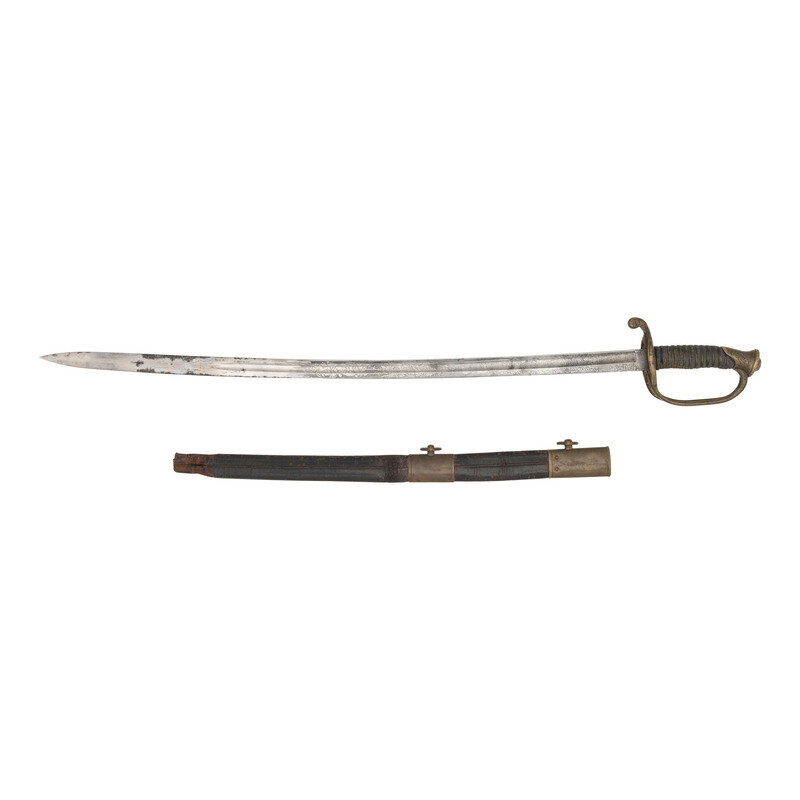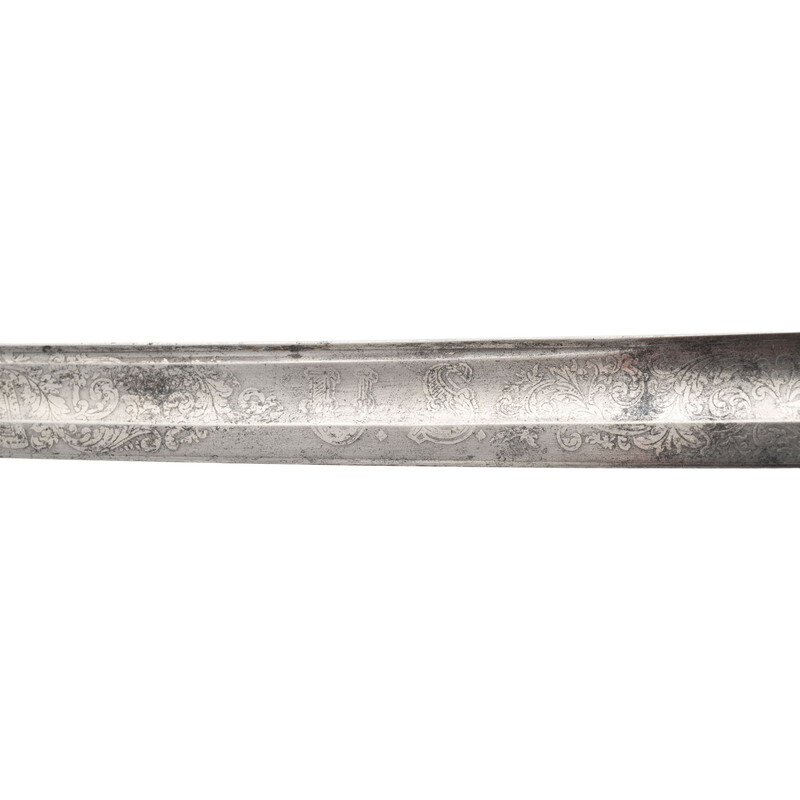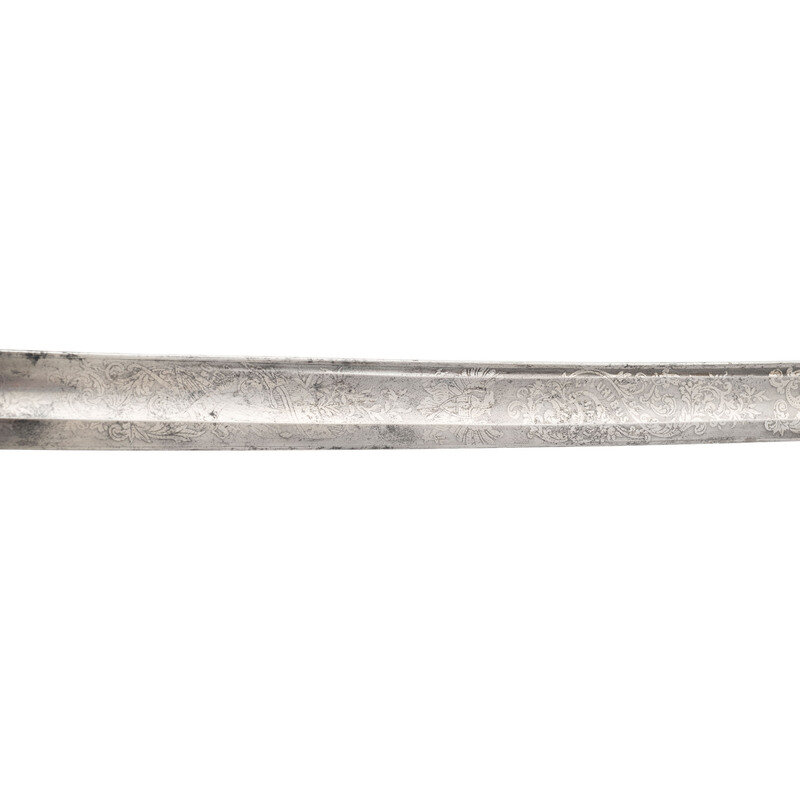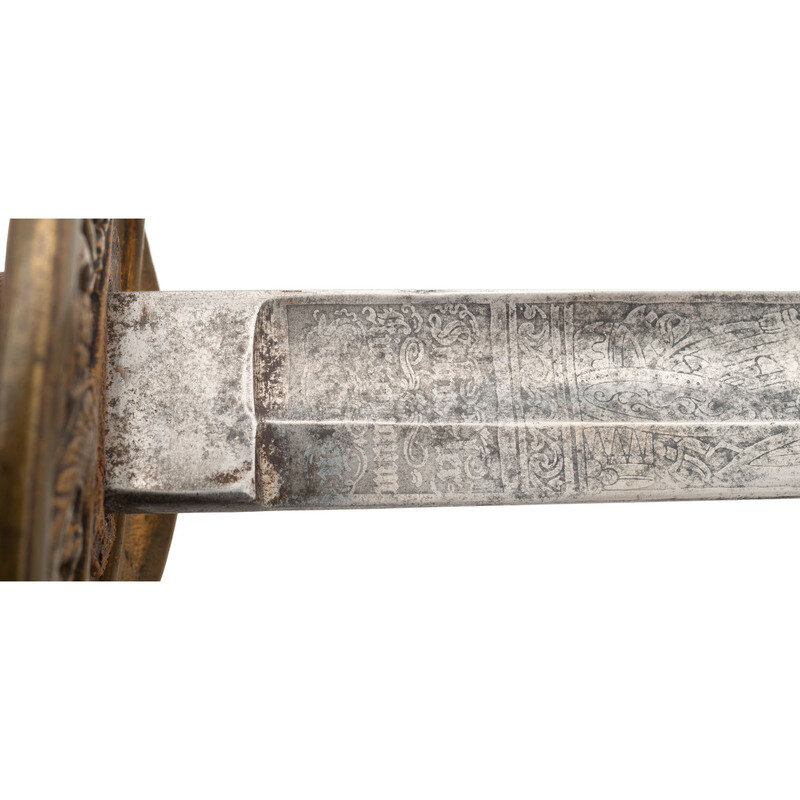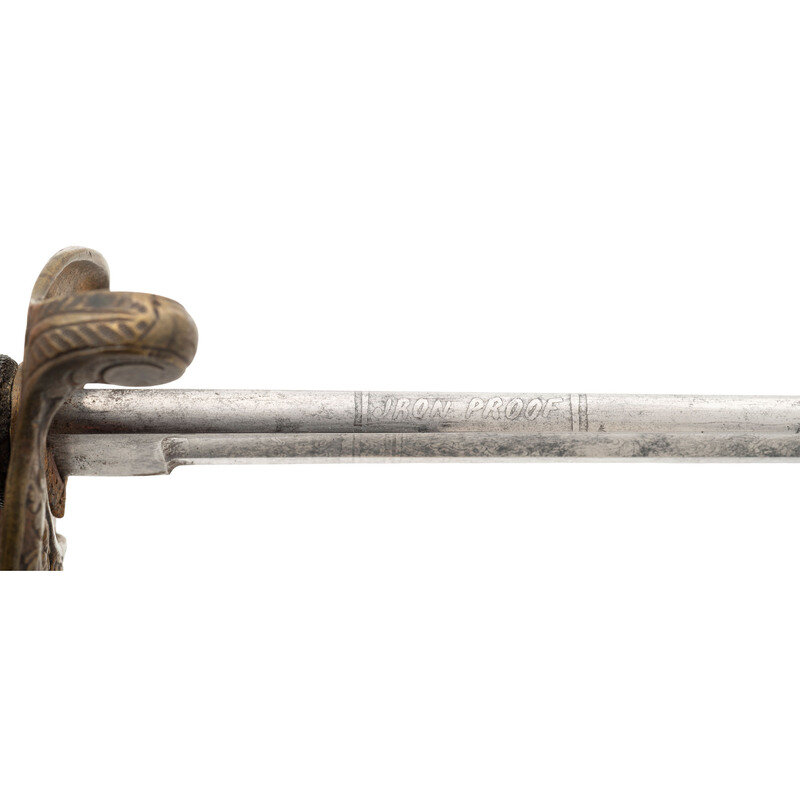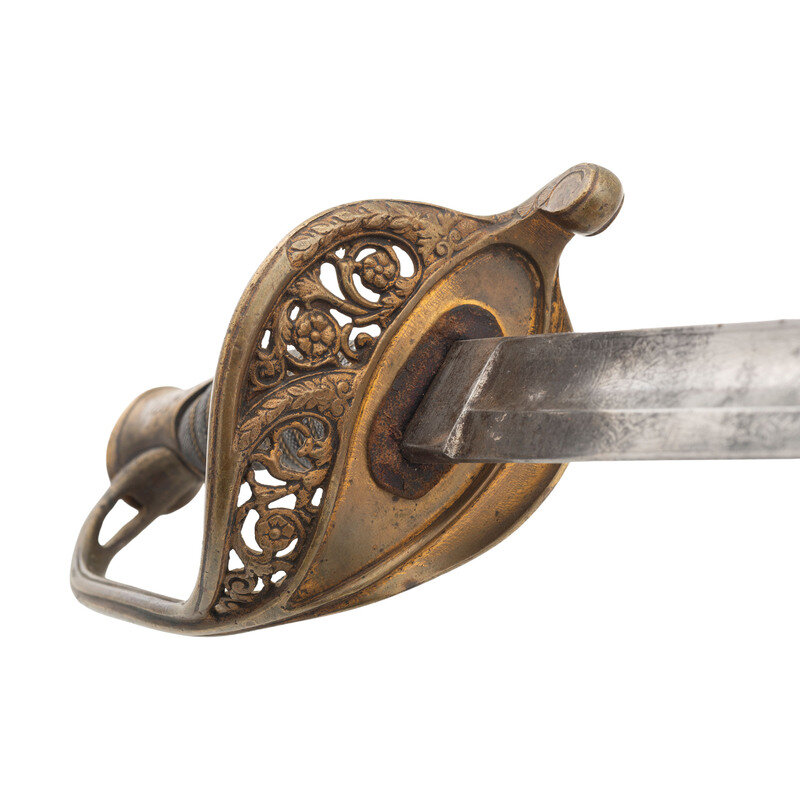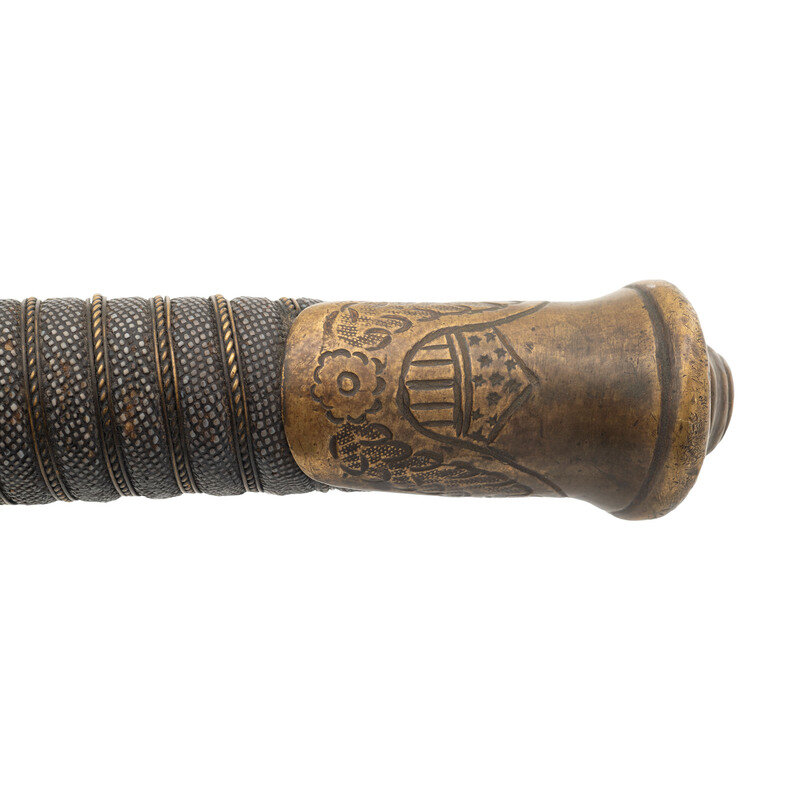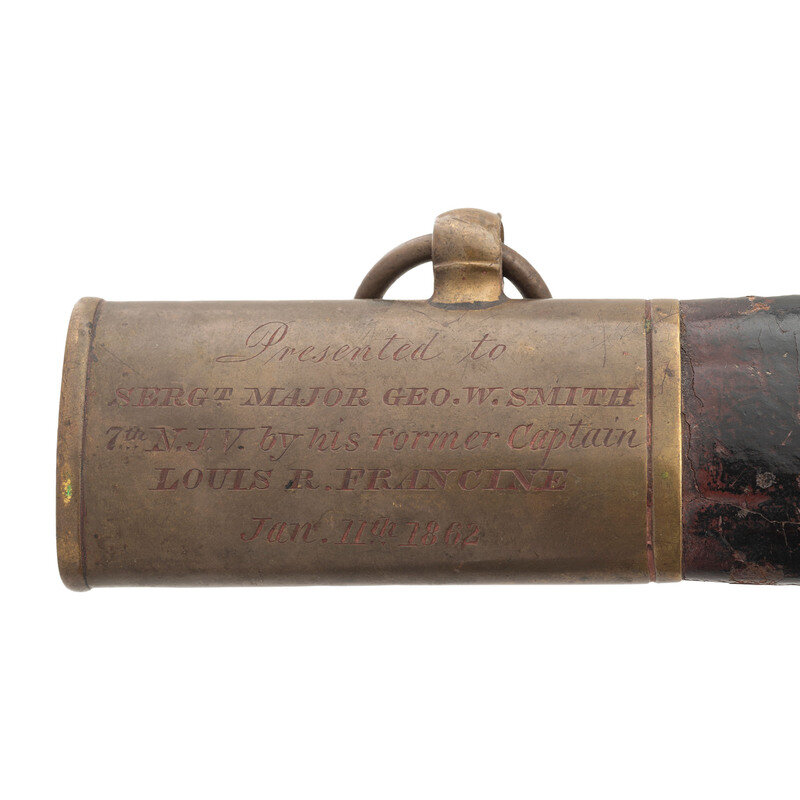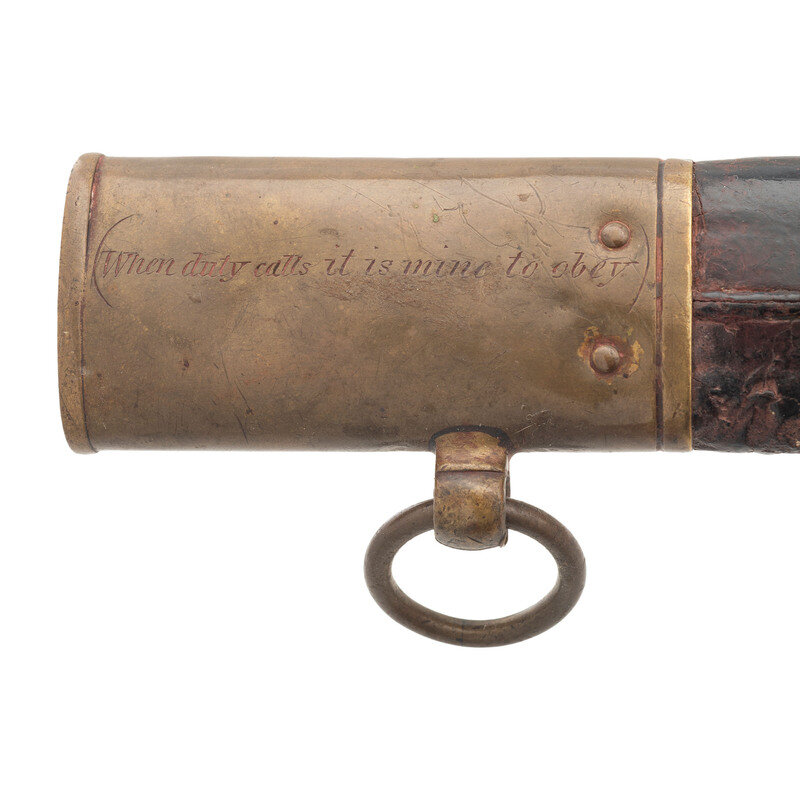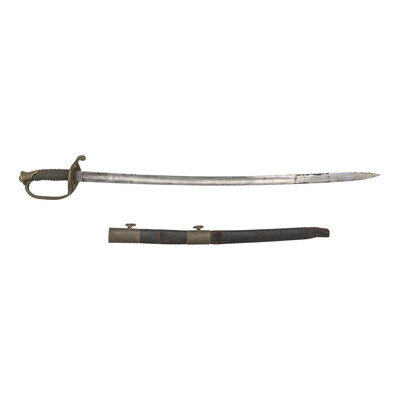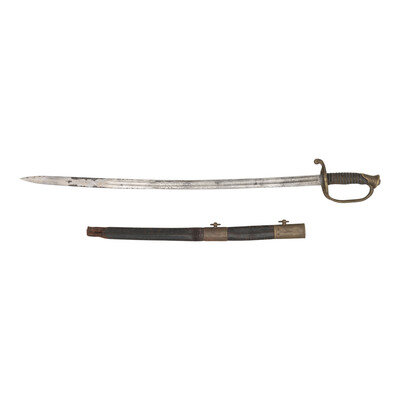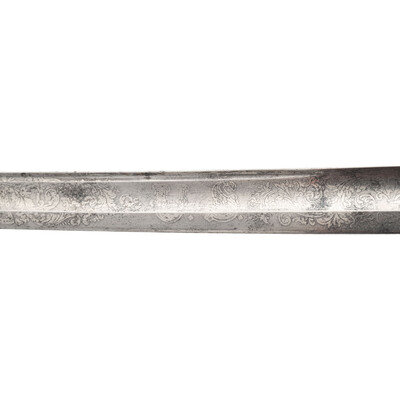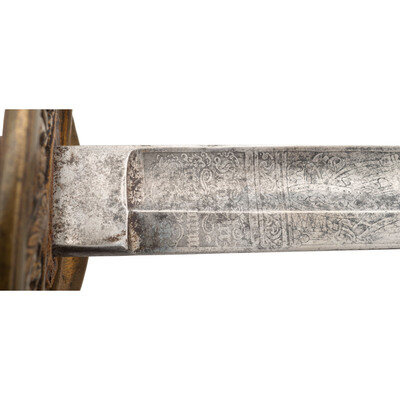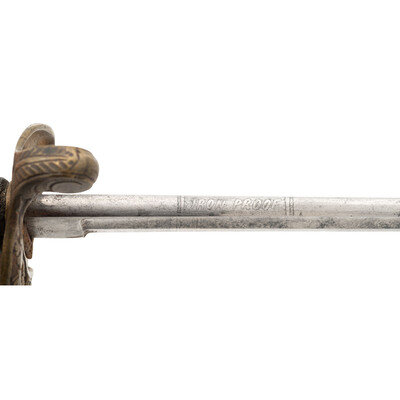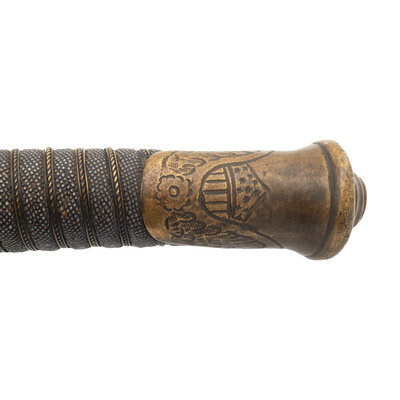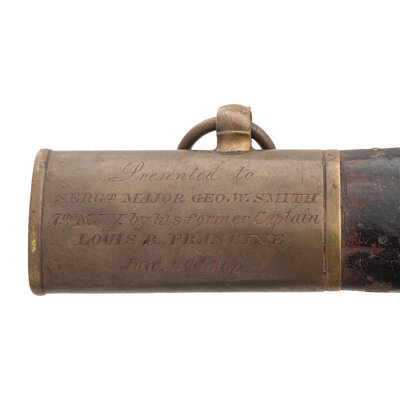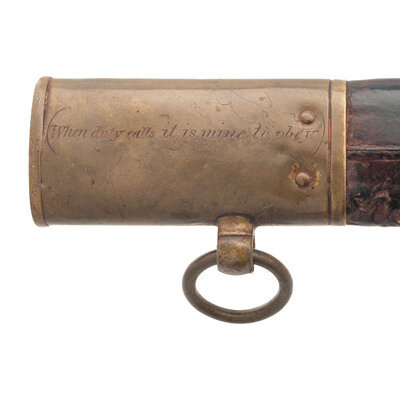Lot 22
S&K Model 1850 Foot Officers Sword Presented to Sergeant Major (Capt.) George Smith - 7th NJ Infantry - WIA at Chancellorsville
Sale 1353 - Arms, Armor and Militaria
May 1, 2024
10:00AM ET
Live / Cincinnati
Own a similar item?
Estimate
$2,500 -
3,500
Price Realized
$2,040
Sold prices are inclusive of Buyer’s Premium
Lot Description
S&K Model 1850 Foot Officers Sword Presented to Sergeant Major (Capt.) George Smith - 7th NJ Infantry - WIA at Chancellorsville
American Civil War
31.25" slightly curved single-edged spear point blade with 21.5" unstopped fuller. Overall length 37" with a 5.5" hilt. Gilt brass guard with foliate decorations, grooved wooden grip covered in shagreen with 12 wraps of multi-strand wire. Blade etched with flowing foliate images, patriotic and martial themes and Schnitzler/Kirschbaum/Solingen on the obverse above the ricasso. The sword is accompanied by its damaged and incomplete brass mounted leather scabbard with the upper mount engraved: Presented to/SERGT. MAJOR GEO. W. SMITH/7th N.J.V. by his former Captain/LOUIS R FRANCINE/Jan. 11th 1862 and on the reverse of the mount (When duty calls it is mine to obey). The sword is additionally accompanied by three binders of research regarding Smith and the 7th NJ, including voluminous research into his pension records.
George W Smith (1828-1907) in the 7th New Jersey Volunteer Infantry on August 23, 1861 and mustered in as a private in Company A. The regiment did duty in Northern Virginia and Maryland during the fall of 1861 and into early spring of 1862. At some point that fall Smith was made the 1st Sergeant of Company A and on January 11, 1862 was promoted to regimental Sergeant Major. In April they joined McClellan's Peninsula Campaign and were involved in the Siege of Yorktown, as well as the battles of Williamsburg and Fair Oaks. Roughly two weeks after the fighting at Fair Oaks Smith was promoted to 2nd Lieutenant and returned to Company A where he had originally served. The regiment then fought during the Seven Days Before Richmond, including at Oak Grove, Savage's Station, Glendale and Malvern Hill. The regiment then took part in Pope's Northern Virginia Campaign, which included fighting at Bristoe Station, Groveton, Second Manassas and Chantilly. Roughly a month after the engagement at Chantilly, Smith was promoted to 1st Lieutenant and transferred to Company H. In December the regiment fought at Fredericksburg. The regiment started 1863 with Burnside's ill-fated "Mud March" in January and for the next few months was on duty near Falmouth. On February 23, 1863 Smith was promoted to Captain in command of Company C. The end of April brought the beginning of what would be the Chancellorsville Campaign. During that battle Smith was severely wounded by a bullet in the lower jaw. He was left for dead on the field, as the bullet not only destroyed the jaw but passed through his tongue and windpipe. Through the efforts of a regimental friend he was removed from a field hospital where doctors would not treat him due to the severity of his wound, to a hospital in Falmouth where he was again refused treatment as the wound was considered mortal. Through the ministrations of a local good samaritan woman and her pleading he was eventually treated and did survive, although the wound would not heal well and he resigned from the army on July 1, 1864. The regiment continued fighting in the war and at Gettysburg, Colonel Francine who presented the sword to Smith was killed in action. Amazingly, despite the severe wound which affected his ability eat and speak for the balance of his life, Smith lived until 1907.
George W Smith (1828-1907) in the 7th New Jersey Volunteer Infantry on August 23, 1861 and mustered in as a private in Company A. The regiment did duty in Northern Virginia and Maryland during the fall of 1861 and into early spring of 1862. At some point that fall Smith was made the 1st Sergeant of Company A and on January 11, 1862 was promoted to regimental Sergeant Major. In April they joined McClellan's Peninsula Campaign and were involved in the Siege of Yorktown, as well as the battles of Williamsburg and Fair Oaks. Roughly two weeks after the fighting at Fair Oaks Smith was promoted to 2nd Lieutenant and returned to Company A where he had originally served. The regiment then fought during the Seven Days Before Richmond, including at Oak Grove, Savage's Station, Glendale and Malvern Hill. The regiment then took part in Pope's Northern Virginia Campaign, which included fighting at Bristoe Station, Groveton, Second Manassas and Chantilly. Roughly a month after the engagement at Chantilly, Smith was promoted to 1st Lieutenant and transferred to Company H. In December the regiment fought at Fredericksburg. The regiment started 1863 with Burnside's ill-fated "Mud March" in January and for the next few months was on duty near Falmouth. On February 23, 1863 Smith was promoted to Captain in command of Company C. The end of April brought the beginning of what would be the Chancellorsville Campaign. During that battle Smith was severely wounded by a bullet in the lower jaw. He was left for dead on the field, as the bullet not only destroyed the jaw but passed through his tongue and windpipe. Through the efforts of a regimental friend he was removed from a field hospital where doctors would not treat him due to the severity of his wound, to a hospital in Falmouth where he was again refused treatment as the wound was considered mortal. Through the ministrations of a local good samaritan woman and her pleading he was eventually treated and did survive, although the wound would not heal well and he resigned from the army on July 1, 1864. The regiment continued fighting in the war and at Gettysburg, Colonel Francine who presented the sword to Smith was killed in action. Amazingly, despite the severe wound which affected his ability eat and speak for the balance of his life, Smith lived until 1907.
This lot is located in Cincinnati.
From the Collection of George Oldenbourg
Condition Report
Contact Information
Auction Specialists
